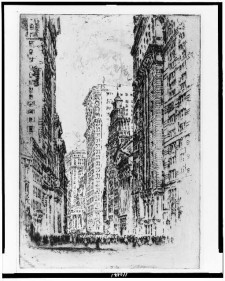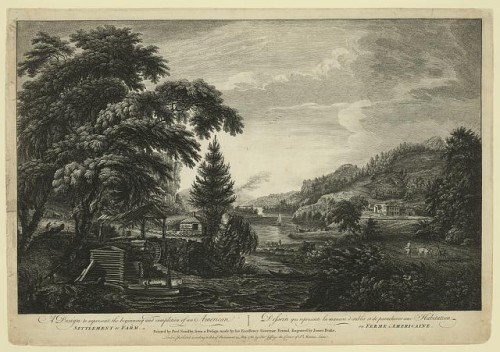TW Column by Emily Toth
“I hate Nature!” my mother used to say. “Give me pavements and perverts!”
By “perverts,” she meant street eccentrics, the harmless, raincoated characters who used to keep regular hours on certain Manhattan streets. She didn’t cotton to the dangerously weird.
 What she did like was the raffish unpredictability of city life. She was a native New Yorker who loved colorful stories, and I remember how she pined when we moved to Cleveland. People there were earnest and kind, but they didn’t buttonhole you with wild tales or give each other elaborate, hostile gestures on the street. There was no local color.
What she did like was the raffish unpredictability of city life. She was a native New Yorker who loved colorful stories, and I remember how she pined when we moved to Cleveland. People there were earnest and kind, but they didn’t buttonhole you with wild tales or give each other elaborate, hostile gestures on the street. There was no local color.
The thought of checking out bucolic southern Ohio—“pastures!” “cows!”—horrified her.
She also hated, as I do, writers who give us a lot of Nature. I hate descriptions of the great outdoors, the tundra, the owls and the loons. The late James Michener reportedly had a research assistant who wrote the thirty pages about ducks in his monster novel Chesapeake. I’m glad it wasn’t me.
But I do like Peyton Place, the scandalous Grace Metalious novel. Peyton Place’s first sentences—“Indian summer is like a woman. Ripe, hotly passionate, but fickle.”—strike me as great purple prose. It’s not Nature, but a voluptuous view of life. After an opener like that, I keep reading.
Peyton Place does have Pure Nature. The dreamy girl who wants to be a writer dances around in the woods—and I flip ahead to the people who matter: the dedicated schoolteacher, the sordid shack dwellers, the brave doctor who performs an illegal abortion. The small-town drunks aren’t bad. I love the comeuppance of the nasty, rich playboy who’s seen driving too fast along a country road (it’s not described! we’re saved!). He’s grabbing for his date’s bare breast (“wicked,” “forbidden”) when he’s righteously hit by a truck.
But that’s not Nature. It’s a crude Darwinism. It’s schadenfreude for everyone.
“Nature” too often means a goopy love of trees as a substitute for real feelings and strong plots. Those long passages about the joys of the natural world remind me of the whale lore in Moby Dick or the cathedral lore in Victor Hugo’s Notre Dame de Paris. We don’t really need to know this stuff, and I like Elmore Leonard’s advice to writers: “Try to leave out the part that readers tend to skip.”
The women local-color writers in the 1890s did just that—and they’re the great subversive users of Nature. They set their compact stories in remote villages with quaint customs. Their characters seem to be simple folk without complex emotions. New York editors lapped up Sarah Orne Jewett, Mary E. Wilkins Freeman, and Kate Chopin for their seemingly wholesome pictures of rural New England and Louisiana. Until Chopin got rowdy, there wasn’t any troublesome sex.
What’s fascinating now is how wildly the reviewers (all men) missed what Jewett, Wilkins Freeman, and Chopin were saying. Jewett’s “A Wild Heron” is about a lonely child whose best friend is a cow (!), but the child also saves the great heron from a hunter who wants to kill and exhibit it. The story is gripping, gut-wrenching, because you don’t know if the girl will make the right choice.
Likewise, the men who wrote about Wilkins Freeman’s “A New England Nun” saw its main character—a solitary woman who brews little teas and has a perfect little house in a perfect little yard—as obsessive-compulsive and deprived. They thought she was a rather comical lost soul. But anyone who reads with empathy sees that she tames Nature around her and sculpts it to what she wants. She’s an artist of the solitary and independent life.
Most hilarious or depressing are the early reviews of Bayou Folk, Kate Chopin’s first short story collection. The reviewers praised the “charm” and “cheerfulness” in the lives of the “simple” Louisiana people she wrote about, with their bayous and Frenchy expressions and cute feuds.
The reviewers were totally snowed, completely deceived by the local-color backgrounds. They didn’t see that the 23 stories in Bayou Folk include violent husbands who half-kill their wives, terrified slaves who risk their lives for their owners, and old people who lose their homes and their minds. Chopin’s tone is matter-of-fact, but, except for a few lighthearted moments—the sexual banter in “At the ‘Cadian Ball,” for instance—the stories are pretty grim. Chopin’s “In Sabine” may be the only story from the 1890s in which a battered wife escapes—but there are two others in the collection in which battered wives stay or die.
So, as first noted by Susan Koppelman, women writers have used “Nature” and “local color” in an extraordinarily clever way: as a mask for universal social criticism. These writers, especially in the 1890s, seemed to be writing directly to other women, using Nature and local color as a veil that men couldn’t penetrate.
When my mother hated Nature, she was saying she preferred stories about things—and people—that mattered. She never met a cow she liked. Nor did Kate Chopin, who was once forced to milk a cow when farm hands didn’t show up. Chopin didn’t think that was very funny at all, nor did she care for the “local color” fans at an Indiana writers’ conference she attended in 1894. Homespun wasn’t enough. Writers, she wrote, should look at all of human existence, “stripped of the veil with which ethical and conventional standards have draped it.”
I think she would have voted for pavements and perverts.
Publishing Information
- Peyton Place by Grace Metalious (Julian Messner, 1956).
- “Easy on the Adverbs, Exclamation Points and Especially Hooptedoodle” by Elmore Leonard, New York Times, July 16, 2001.
- “A White Heron” by Sarah Orne Jewett, A White Heron and Other Stories (Houghton, Mifflin and Company, 1886).
- “A New England Nun” by Mary E. Wilkins Freeman, A New England Nun and Other Stories (Harper & Brothers Publishers, 1891).
- Bayou Folk by Kate Chopin (Houghton, Mifflin and Company, 1894).
- Headnote to Helen Reimensnyder Martin's “A Poet Though Married” by Susan Koppelman in Koppelman, ed. The Other Woman: Stories of Two Women and a Man (Feminist Press, 1984).
- “The Western Association of Writers” by Kate Chopin, Critic, July 7, 1894.
Art Information
- “The Stock Exchange” by Joseph Pennell, 1904; Library of Congress Prints and Photographs Division; public domain
- A design to represent the beginning and completion of an American settlement, painted by Paul Sandby from a design made by his excellency Governor Pownal; engraved by James Peake, 1761; Library of Congress Prints and Photographs Division; public domain
 Emily Toth is a contributing writer at Talking Writing, where her column “Nothing but the Toth” appears regularly.
Emily Toth is a contributing writer at Talking Writing, where her column “Nothing but the Toth” appears regularly.
"Women who write books have to have enough sitzfleisch to work the computer, but most of our composing is really in our heads. I 'write' when I swim or teach or cook, and I didn’t write this column by sitting down at the computer and yodeling, 'Muse, come to me!'" — "We Can't Sit Still"

